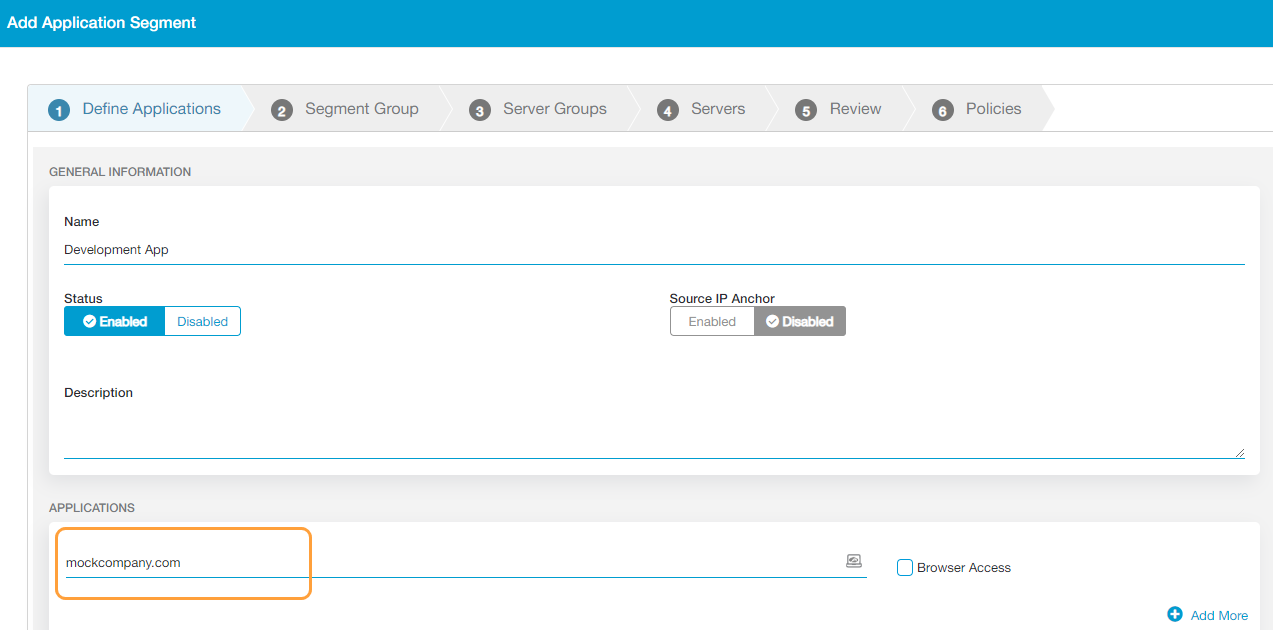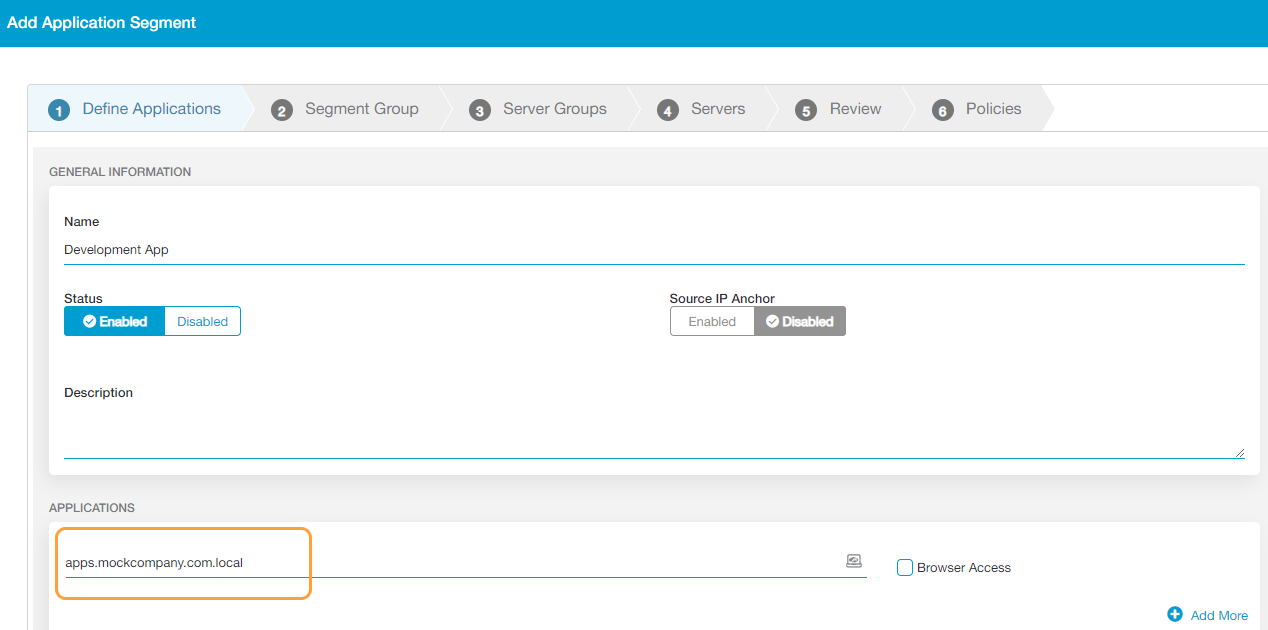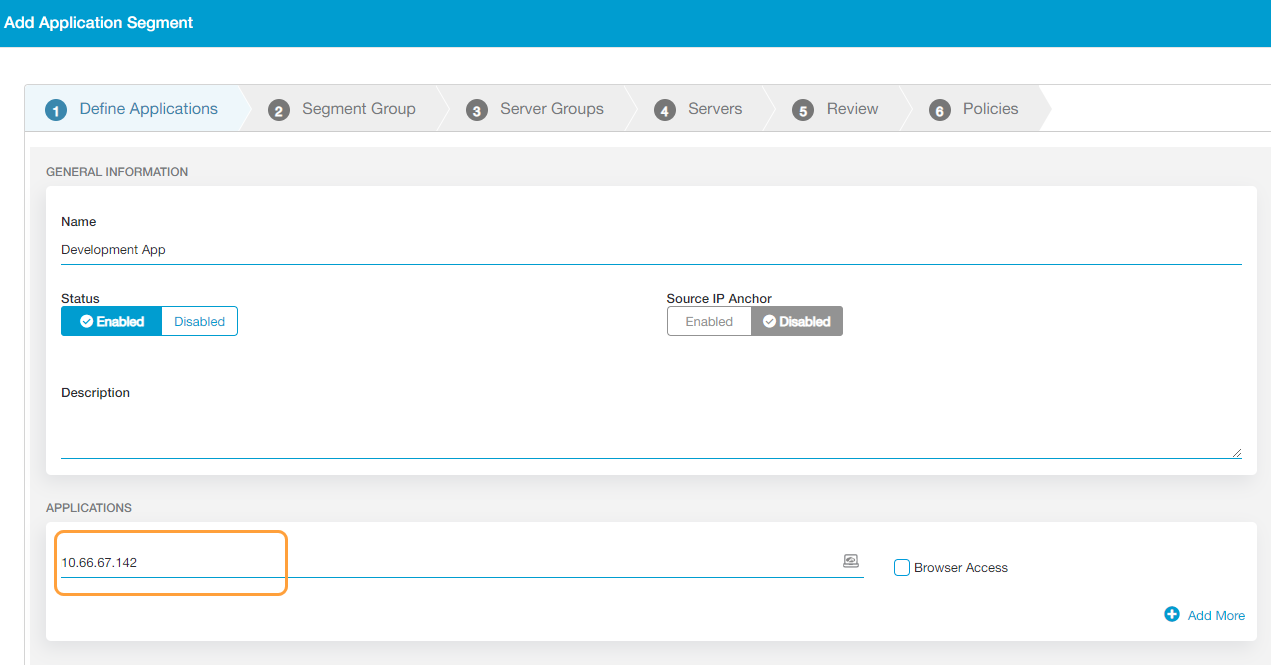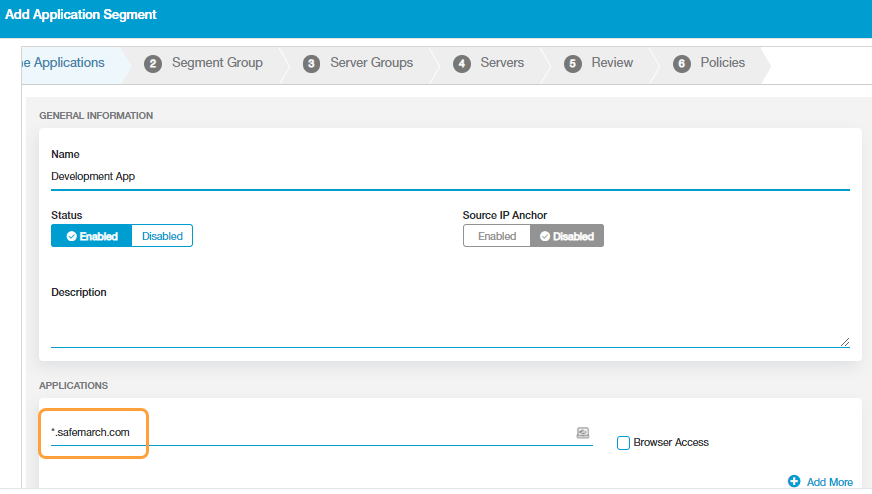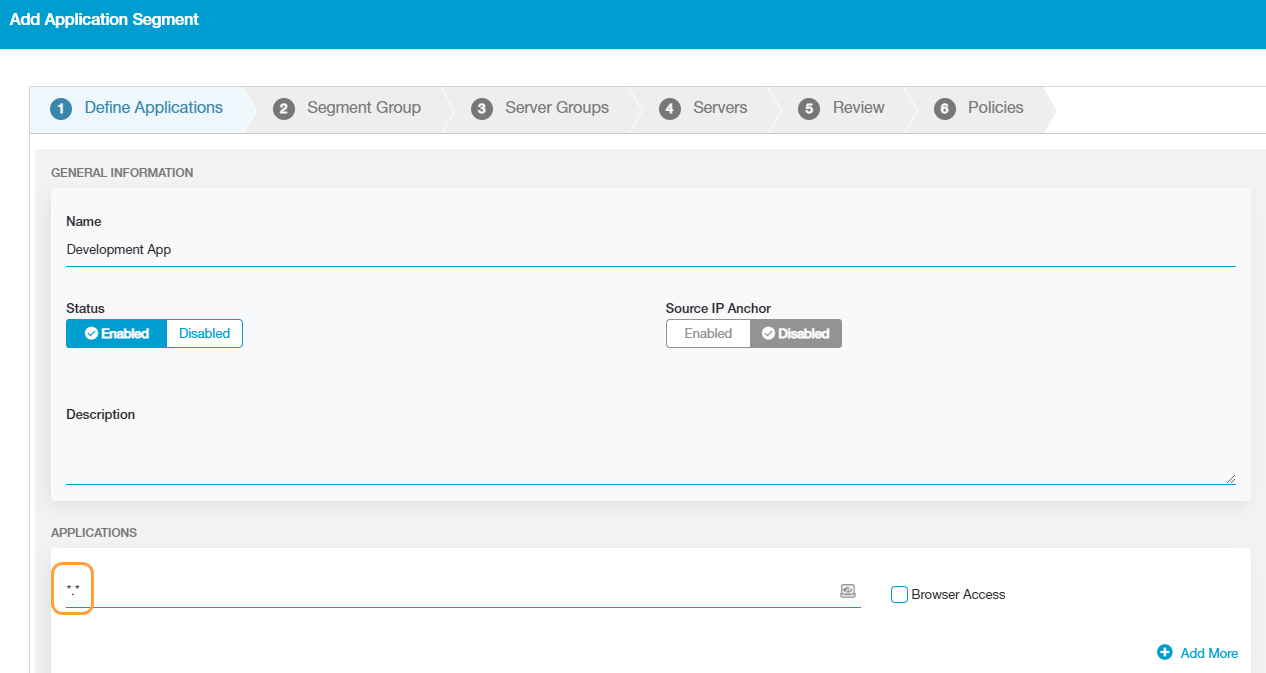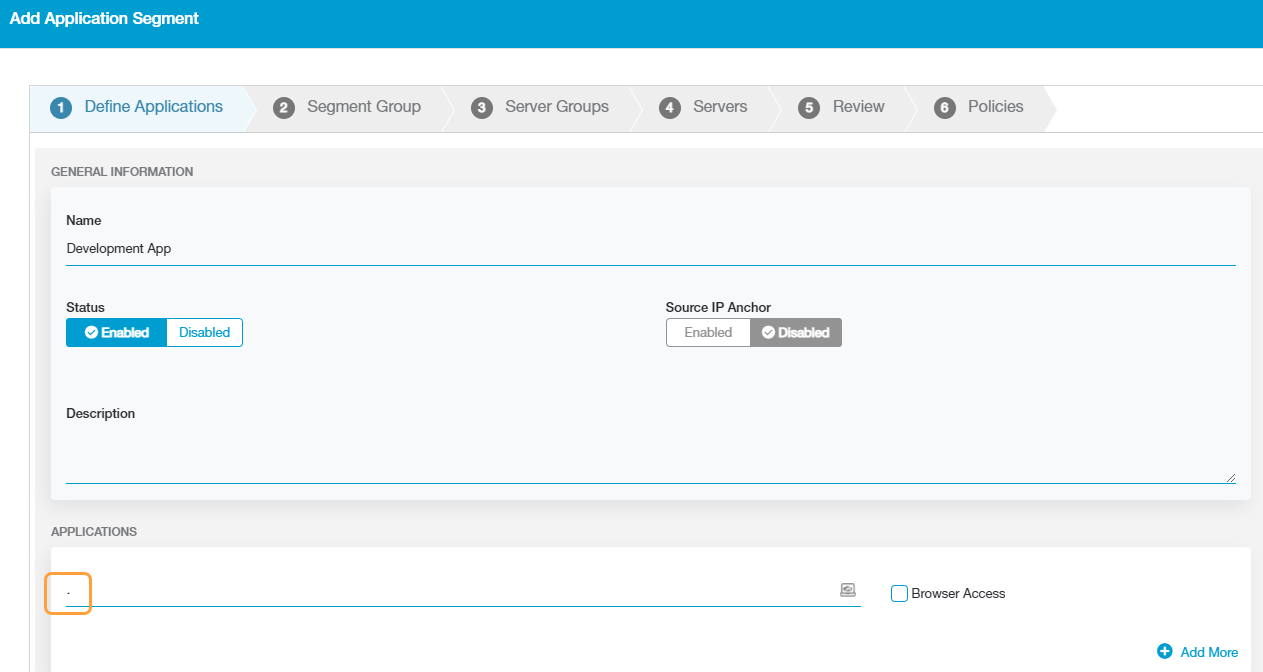Experience Center
About Application Access
There are two ways to provide access to applications, through an application definition or by application discovery.
About Application Definitions
When configuring an application segment, you can define individual applications to change their settings (e.g., Double Encryption, Health Reporting, etc.) or configure different access policies for them. For example, if you want to allow only specific users access to the application marketing.safemarch.com and allow another group of users to access sales.safemarch.com, you can explicitly define each application. You can then configure policies referencing those applications individually. When configuring two or more application segments, ensure that there is no conflict in destination ports.
- Example of conflicting application segments
If two or more application segments cover the same destination address, Zscaler Client Connector will attempt to match traffic to the more granular application segment. If there is no match in this application segment for the destination port, Zscaler Client Connector will bypass Private Applications and send traffic direct. Consider the following configuration as an example of two conflicting application segments.If two or more application segments cover the same destination address, Zscaler Client Connector will attempt to match traffic to the more granular application segment. If there is no match in this application segment for the destination port, Zscaler Client Connector will bypass Private Applications and send traffic direct. Consider the following configuration as an example of two conflicting application segments.
- Application Segment 1
- FQDN: *.example.com
- Ports: TCP 1-65535 UDP 1-65535
- Application Segment 2
- FQDN: www.example.com
- Ports: TCP 8843
If a user navigates to www.example.com:80, the request resolves to the more specific FQDN in Application Segment 2, but fails at the closed port 80. Zscaler Client Connector does not forward traffic to Application Segment 1 and is dropped from Private Applications. This can be resolved by ensuring ports are properly configured to allow access. For example:
- Application Segment 1
- FQDN: *.example.com
- Ports: TCP 1-65535 udp 1-65535
- Application Segment 2
- FQDN: www.example.com
- Ports: TCP 80
- Application Segment 1
Defining an Application
To define an application within an application segment, you must enter one or more of the following on the Application Segments page (Policies > Access Control > Private Applications > App Segments):
- FQDN (e.g., marketing.safemarch.com)
- Local domain name (e.g., directory.safemarch.local)
- IP address (e.g., 192.0.2.0)
- Wildcard domain (e.g., *.safemarch.com)
- Wildcard only (i.e., . and *.*)
Defining an application with a wildcard only requires approval from Zscaler, and it is not available for application discovery. Contact Zscaler Support for more information.
You can also configure FQDNs or domain names and IP subnets to enable application discovery.
For applications that users access using only the hostname (e.g., DFS), ensure that you configure DNS search domains so the search domain is automatically added to the hostname.
